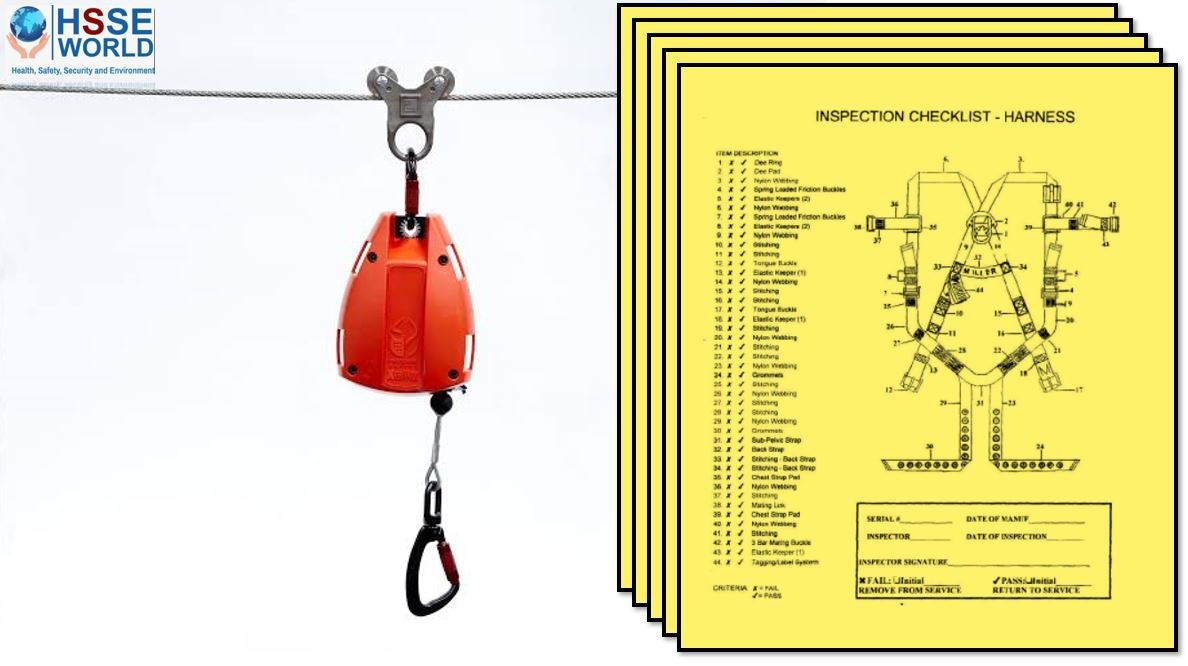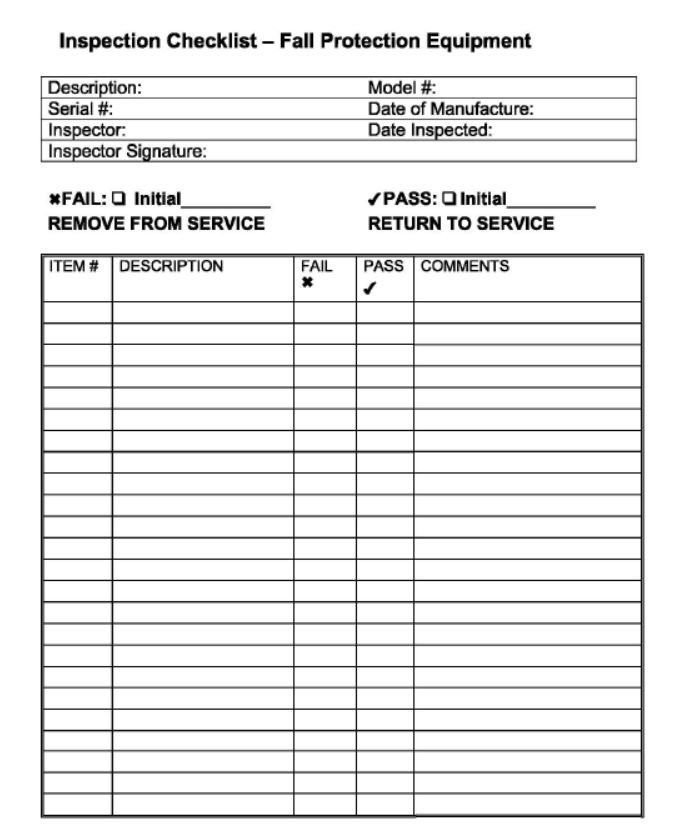Lifeline & Harness Inspection Guide checklist
4 min readHorizontal Lifelines (HLL) can be very effective fall protection solutions in many situations, including situations where other traditional methods are not quite feasible. However, a lot of thought and planning has to go into the use of HLLs, including how and when they will be inspected and maintained. As the employer whose employees will be using the HLL, it is important that you determine a set inspection schedule. OSHA doesn’t dictate the frequency with which you must inspect, but a few things come into play that will help you determine your schedule:
- The American National Standards Institute suggests that documented inspections of Horizontal Lifelines be performed no less than once per year by a Competent Person (as a reminder, a Competent Person, according to OSHA, is one who has both the knowledge/experience to recognize a hazard and the authority to correct it). (ANSI Z359.2 Section 5.5.2.2).
- If the manufacturer has a more frequent requirement, you are required to follow that. Not only does ANSI specifically require you to do so, OSHA will always defer to a manufacturer when their requirement is more stringent than the OSHA regulation.
- ANSI states that their recommendation is a minimum. You should consider the use of the equipment and conditions/materials the equipment is exposed to when determining your schedule.
- This doesn’t mean that OSHA doesn’t require you to inspect the equipment. Between the General Duty Clause (which states that employers MUST provide a workplace free of recognized hazards and is pretty much OSHA’s catch-all for situations for which there is not a specific standard written) and OSHA’s requirement that all fall protection equipment must be inspected before use, you could certainly earn yourself a citation for failing to do so.

Once you’ve determined your schedule, it is important that your equipment is being properly inspected and, let’s be honest, inspecting a horizontal lifeline isn’t an innate talent, so your people are going to need to be trained. If you are using a manufactured system, check with your manufacturer or supplier to see if they provide training. If not, and you can’t find somebody that does, have a capable person review the owner’s manual that comes with the system. In it, you should find a checklist or some similar layout of what needs to be inspected. Generally, you will find things such as:
- Inspecting all fastening devices, down to every last screw and bolt. Check to see if they are loose, missing, or have been altered.
- Looking for deterioration of metal in the form of rust or corrosion.
- Looking for damage or deterioration of any wire or synthetic rope.
- Looking at sleeves and connectors to see that they have been properly installed and are not showing signs of wear or damage.
- Checking the fall indicator – most manufactured systems will have an indicator that will let you know if the equipment has been involved in a fall. If this has been activated, remove the system from service immediately.
- Inspecting any other part not previously mentioned and ensuring no component of the system is compromised in any way.
Remember, this is not an all-inclusive checklist. Each manufacturer may have different requirements, so make sure you check to see what they say about inspections. There is no substitute for a good read through an owner’s manual.
Also, be sure to check what the manufacturer says about maintenance. A lifeline isn’t going to survive indefinitely, but just like your car, you can absolutely prolong its useful life by properly maintaining it. As you will not be making actual repairs to a manufactured system on your own, the biggest parts of maintenance are cleaning the equipment and storing it properly. Once again, in the manual, the manufacturer should provide information on cleaning the system, including what types of cleaners to use and to not use. Often, cleaning only calls for the use of warm water and soap – no abrasives, chemical cleaners, or other materials that could do damage to the equipment. In addition to the components and the housing, if labels are dirty, clean them as soon as possible so they remain legible.
Storage is just as important, but often overlooked. It’s too easy to take equipment and jam it into the nearest open space, but you need to make sure that you store your equipment where you should be storing all your fall protection equipment: in a cool, dry place. Remember, heat, freeze-thaw cycles, grease, rain, or UV radiation from sunlight can break down your system (which is why, as mentioned above, weather conditions play a part in your inspection schedule – if your weather conditions are particularly harsh, you will need to take that into consideration when determining your inspection schedule).
Finally, whether during an inspection or your regular maintenance, if you find a problem or even a suspected problem, do not ignore it! Get any issues checked by the manufacturer immediately. The condition of a lifeline is nothing to ignore or procrastinate about. Error on the side of caution and get anything that you think might even remotely be a problem checked. Remember, it’s called a lifeline for a reason. Don’t compromise it.





3 thoughts on “Lifeline & Harness Inspection Guide checklist”